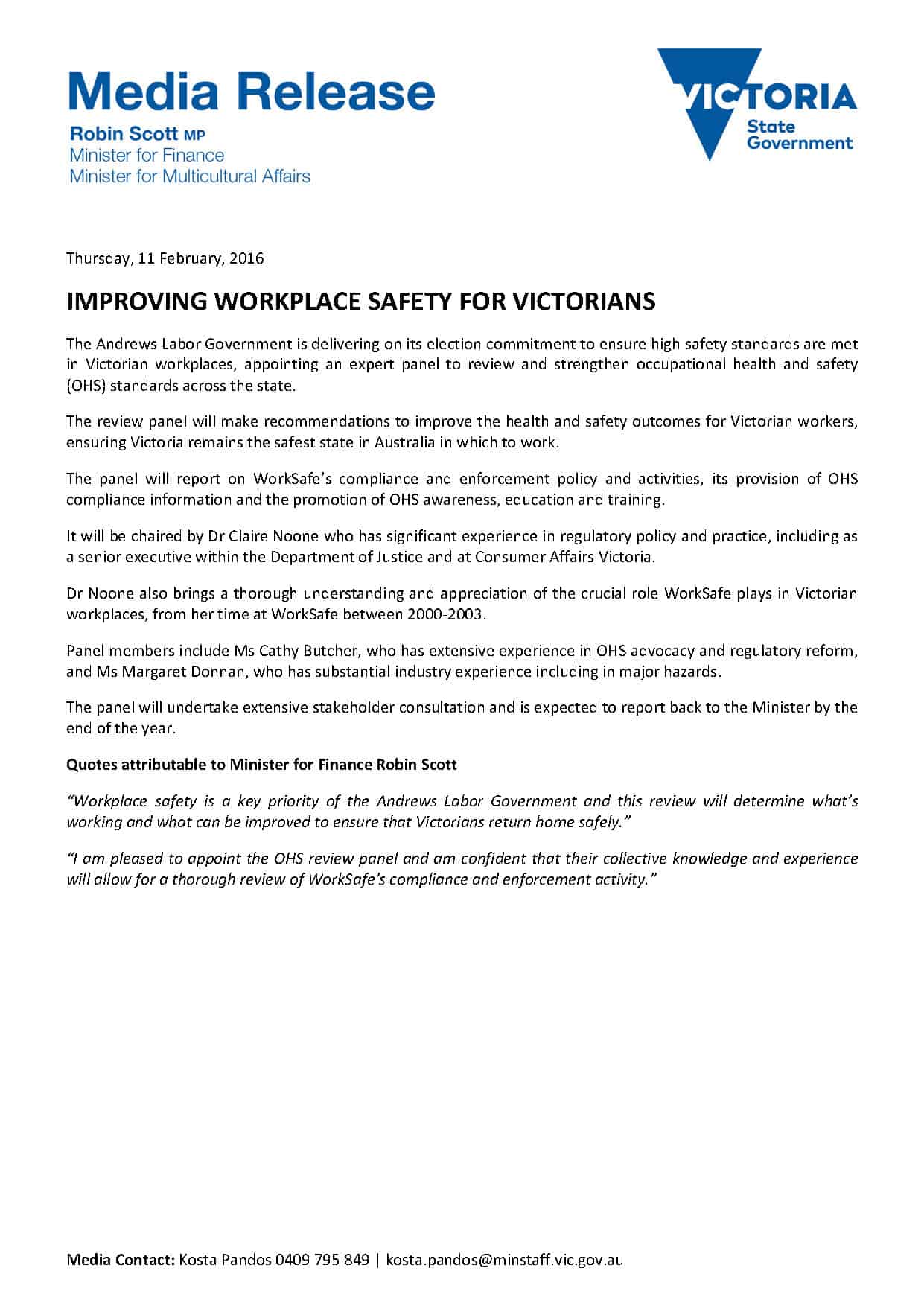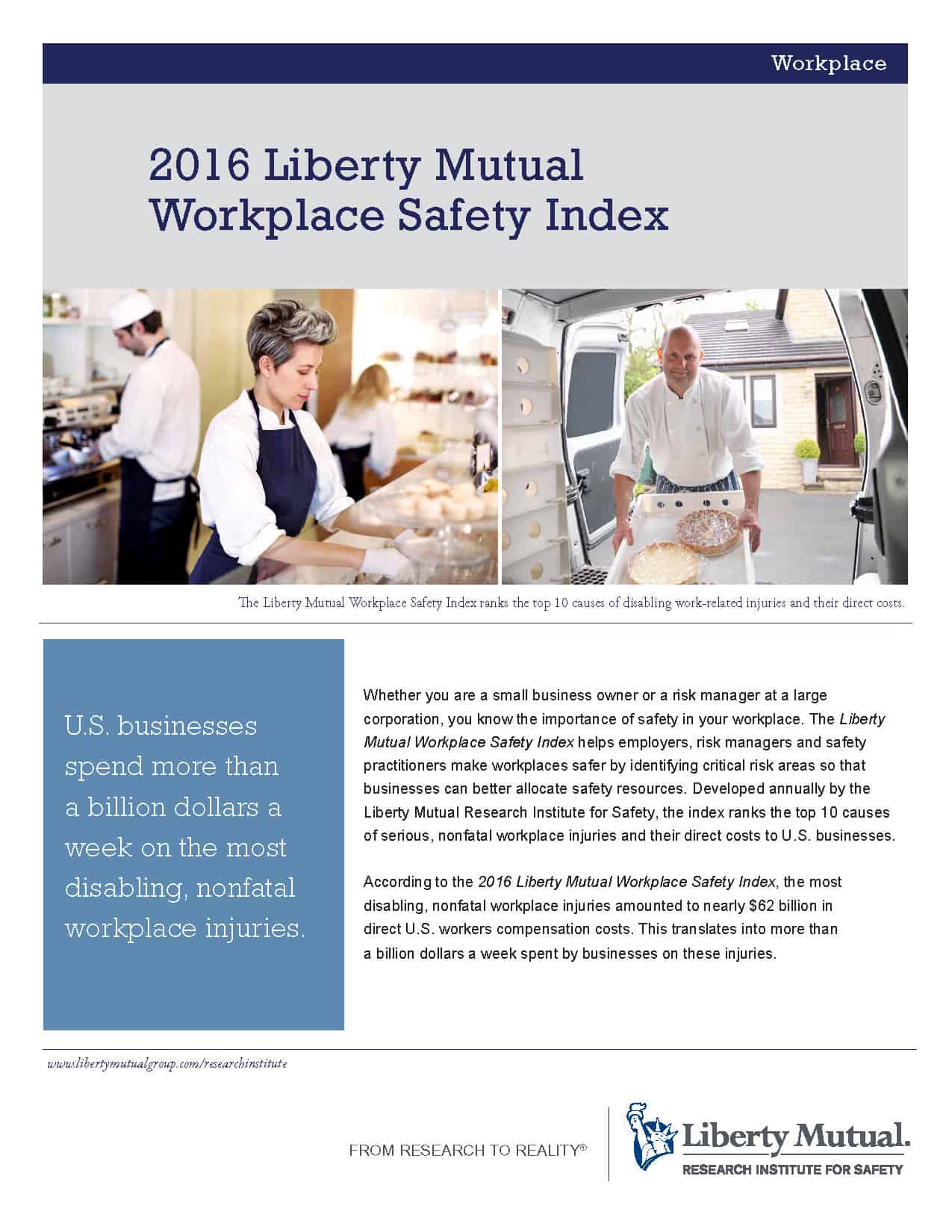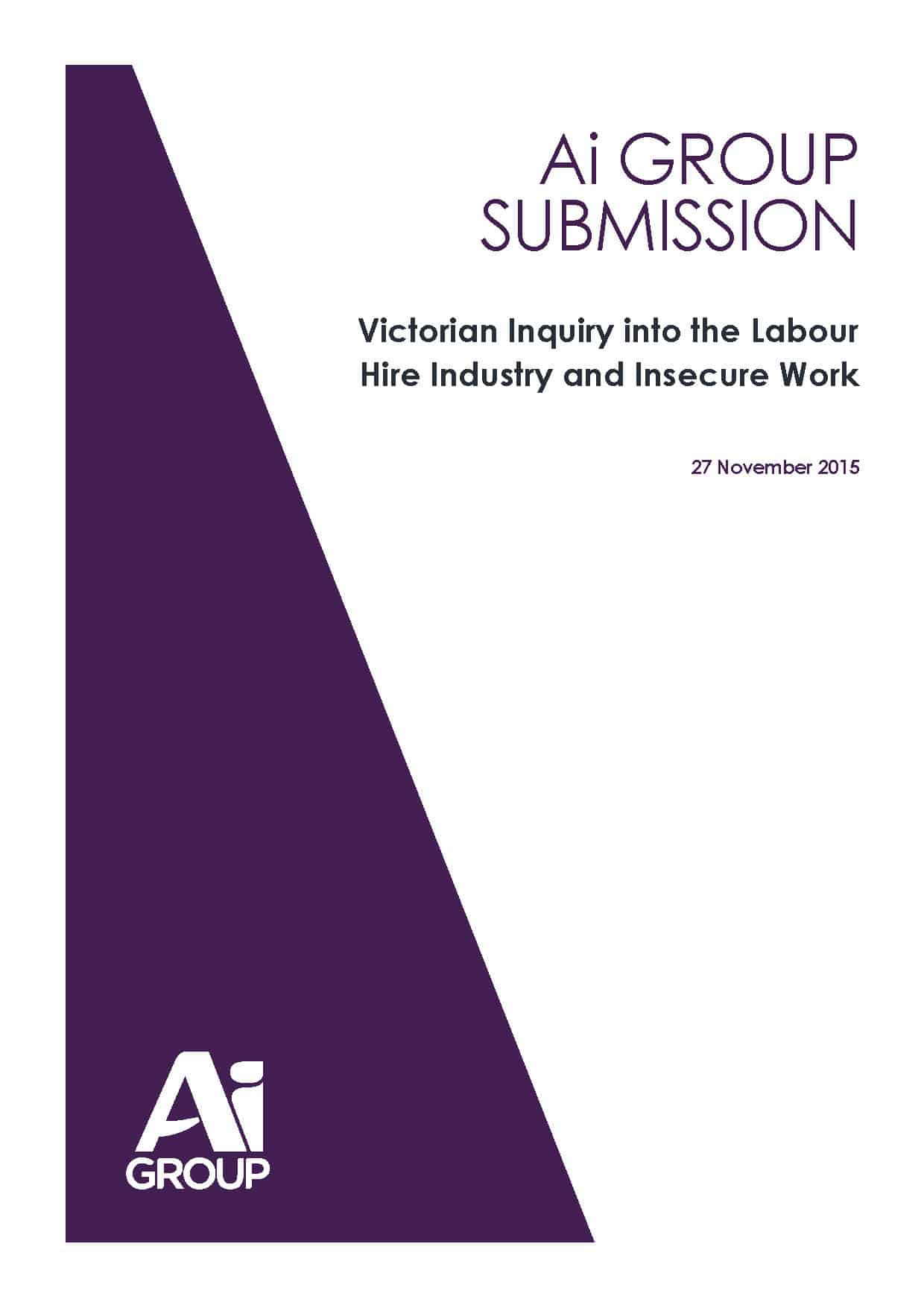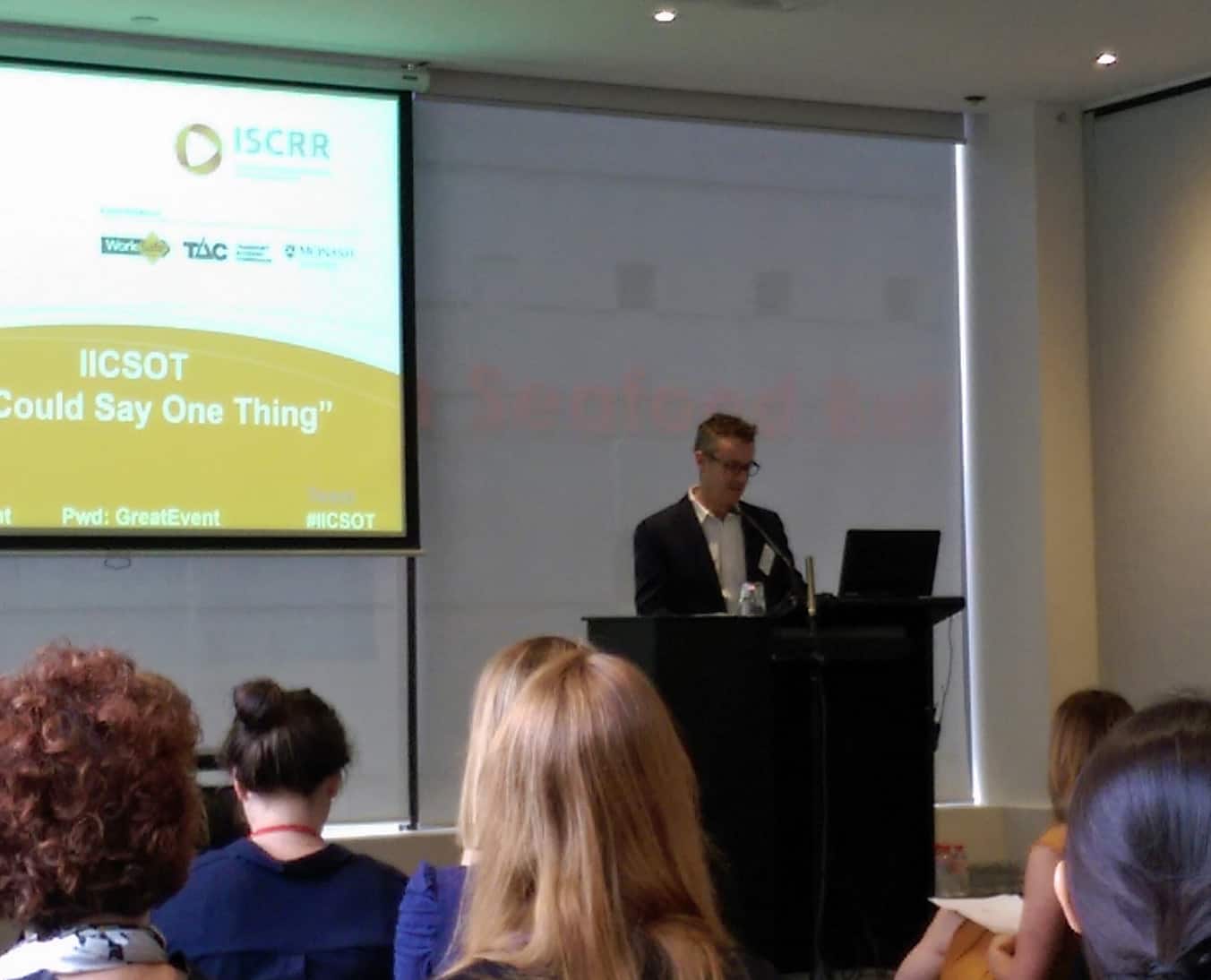On March 4, 2016 WorkSafe Victoria released a media statement with the headline:
“WorkSafe announces new safety record in half-year results”
The headline was reinforced (or the other way round) in the body of the statement with
“The rate of injuries in Victorian workplaces has reached a new record low, according to the half-yearly results released yesterday by WorkSafe Victoria.”
But then states that
“As of 31 December 2015 there were 7 claims per million hours worked (MHW) in Victorian workplaces, compared to 7.34 claims recorded at the end of 2014/15 – a fall of 4.6 per cent.”
So what is it – a record low number of injuries or a record low number of workers’ compensation claims?




 The public submission phase for the
The public submission phase for the  At lunchtime today, the
At lunchtime today, the